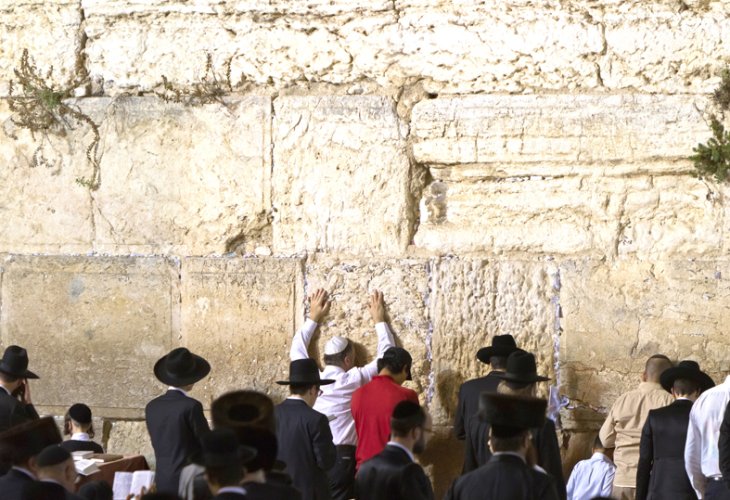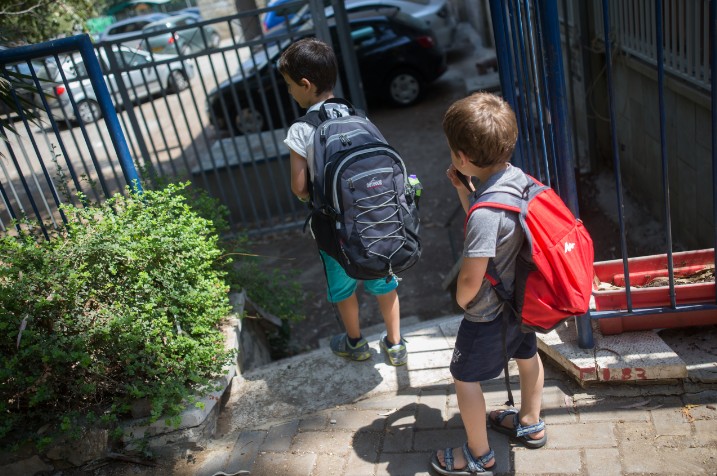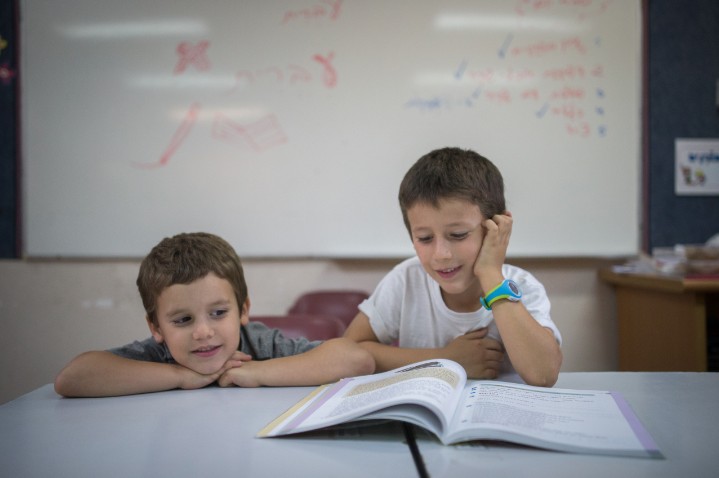How Did Reform Organizations Take Over Jewish Studies in Israeli Public Schools?
Christian tales, disdain for the Sages, heretical interpretations, and 'universal' Judaism: This is what's being taught to students in Israeli public schools under 'Jewish Culture' hours. How did this happen?

How are the high holy days and the mitzvah of repentance taught in Israeli public schools nowadays? In thousands of schools, these concepts are introduced through a textbook published by the Hartman Institute and authorized by the Ministry of Education. This book cites selected laws from Maimonides' 'Laws of Repentance,' under the title 'Order of Reconciliation.' To illustrate the essence of repentance, the page is adorned with a colorful image by the Dutch painter Rembrandt. 'Rembrandt, The Return of the Prodigal Son' is written beneath it. The image depicts one of the most well-known Christian parables from the New Testament, intended to explain the actions of that man. This is the image chosen to demonstrate to Israeli students the beauty of repentance.
How have we reached a situation where Christian motifs easily blend into textbooks that claim to impart Judaism? This is what happens when the teaching of Judaism in public schools is transferred to entities whose interpretation of 'Judaism' does not align with traditional interpretations.
In 1991, someone in the Ministry of Education realized that Israeli students knew less than ever about their Jewish heritage. Like everything in the country, the way to solve the problem was to set up a committee – the Shenhar Committee.
The committee's conclusions were that the crisis in Jewish studies could be 'a real danger and create a crisis for the State of Israel,' and thus cause 'significant harm to collective cohesion.' The committee members were not particularly troubled by the students' level of observance or knowledge of the Bible, but were alarmed that growing ignorance regarding basic Jewish concepts, which past heretics knew and even liked, would lead Israeli students to an emotional disconnect from the idea of Zionism and cause them to 'question its righteousness.'
The committee's report was adopted by the Ministry of Education in 1995. To implement it, the ministry established the Shenhar-Kremnitzer Goal in 1999 to formulate a policy for Jewish cultural heritage education in line with the Shenhar Committee's recommendations.

One of the committee's recommendations was to imbue Jewish culture studies with a humanistic and liberal character. Instead of students feeling they are learning outdated texts irrelevant to their lives, the committee members suggested, let's show them a Judaism with a universal and pluralistic spirit. Naturally, when it came to identifying pedagogical entities that could deliver such pluralistic Judaism, classical Orthodox organizations and institutions could not offer relevant services.
Today, a wide range of organizations from across the Jewish spectrum work in public schools, teaching Jewish culture and values. But when it comes to the new guidelines, it was naturally Reform and Conservative organizations – or those whose orthodoxy is merely a thin veil for Reform thinking – that came with appropriate curricula. For instance, the movement for Progressive Judaism in Israel provides a Bar Mitzvah preparation program in a Reform spirit in public schools, while the liberal-extremist Hartman Institute is responsible for the "Talmud Torah" program in public schools, a program known as the 'Be'eri Program.'
These curricula indeed use Jewish quotes and rituals, but the interpretation is not bound by any accepted rabbinic or halachic line. For example, when the Hartman Institute's 'Be'eri Program' cites the words of Hillel and Shammai, it also gives an opinion on the character of each, an opinion that does not accord with traditional interpretation. Thus, Christian motifs like the statue of the 'Good Samaritan' (a figure in the New Testament) appear in the program's pages dealing with the command: 'Do not stand idly by your neighbor's blood.' Similarly, Michelangelo's depiction of the Creation, a distinctly Christian painting displayed on the Sistine Chapel's ceiling, features in the Reform movement's 'Adabra Na Shalom' program. The program writers clearly state that it is Christian art but also ask students to delve into it and identify which elements of the story of man's creation it includes. All this, as mentioned, is part of 'Israeli Culture' studies.
These initiatives are not new. The collaboration between the Hartman Institute and the Ministry of Education, for example, began seven years ago when Gideon Sa'ar was the Minister of Education. But the fact remains that two Orthodox Ministers of Education have served since, and neither tried to prevent the takeover of Jewish culture studies in the public stream by non-Orthodox entities. In fact, just last year, the Ministry of Education – headed by Naftali Bennett of the Jewish Home – signed a new contract with the Shalom Hartman Institute, under which the institute will continue providing services to the ministry for a total of 5 million shekels.

Not only is no one bothering to limit the Reform footprint in schools, in many respects, the ground is even being prepared for their broader takeover. Minister Bennett ordered, upon taking office, the expansion of Jewish studies in all Israeli schools. Alongside positive steps like bringing studies about great Torah figures of the Sephardic community into Israeli schools, the hours of Jewish studies have also been expanded in public schools. From this year onwards, all Israeli students are required to study 5 hours a week of 'Israeli-Jewish Culture.' The chair of its ministry committee defines the subject as: 'Israeli religiosity without halachic commitment.' In other words, the intentions might be good – but in practice, the expansion of Jewish cultural studies will result in public school students simply spending more time getting to know a very distorted version of Judaism.
And what does the Ministry of Education say? The Aspeclaria Institute, headed by Rabbi Michael Zelba, which devoted considerable efforts to research the scope of the phenomenon and document it in a clear, illuminating, and chilling brochure, failed to receive a serious response. The most detailed response came from the Chairman of the Ministry of Education's Pedagogical Secretariat, Dr. Moshe Weinstock. These curricula, he argues, 'make Judaism beloved by Israeli students.' Indeed, he agrees, these programs 'present Judaism in a way that brings it closer to the state world and emphasizes the religious world less.' Teaching Judaism within a halachic context, he adds, does not seem appropriate to him for public schools. 'The goal is that Torah-observant Jews will appreciate Judaism and identify with it.'
There is only one problem, of course: students in the public stream exposed to these programs may learn about Israeli identity, folklore, Jewish literature, and Christian tales, but any connection between what they learn and actual Judaism is purely coincidental.

